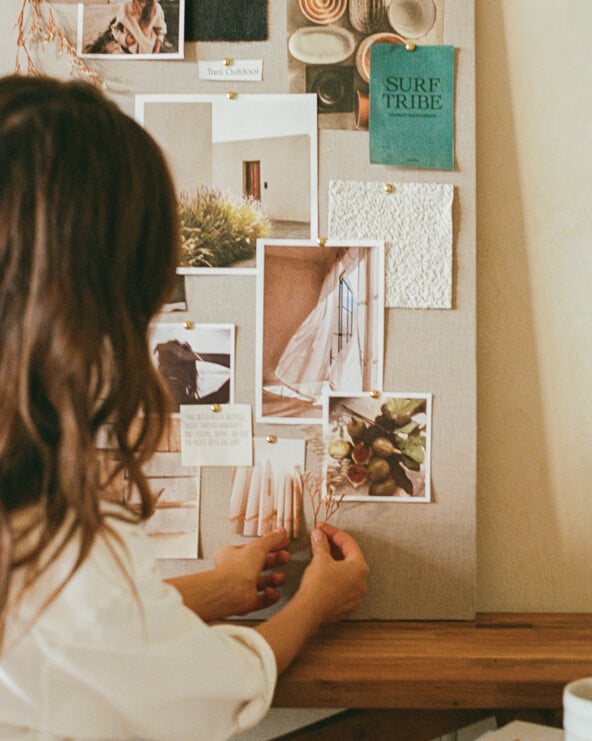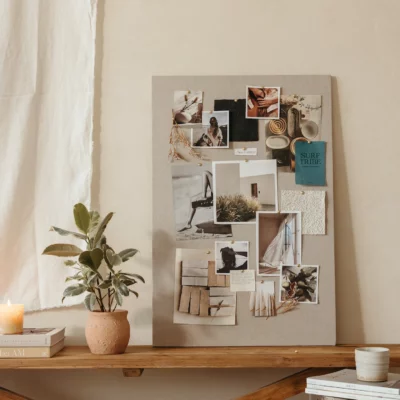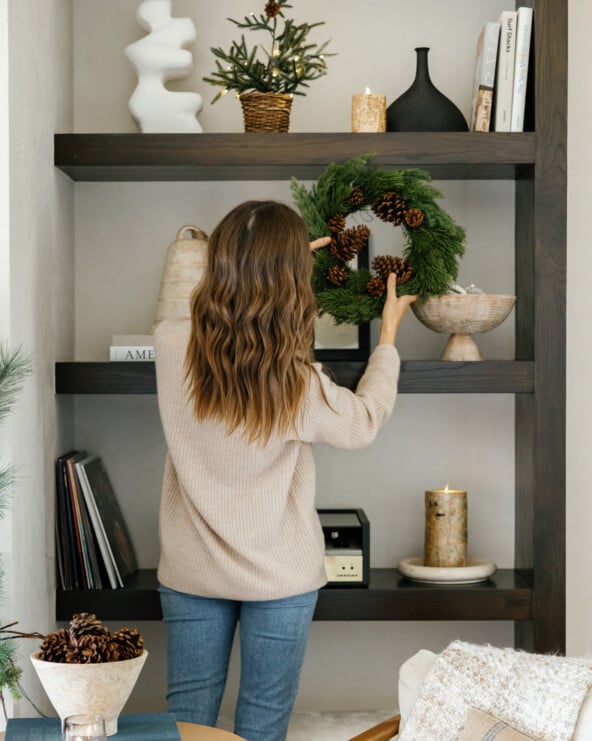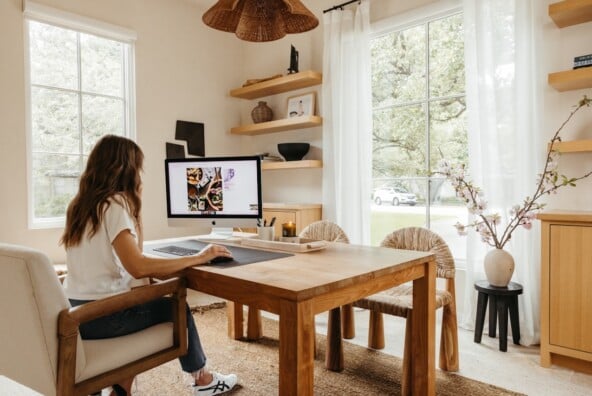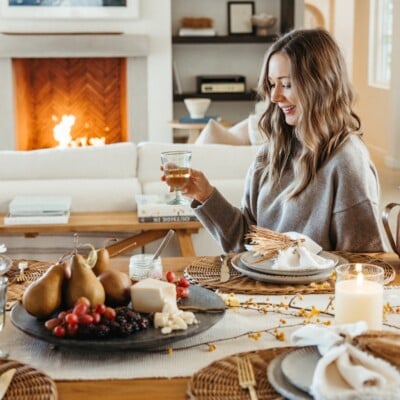Each year, I take a few days to pause, reflect, and get intentional about what I want for the months ahead. It’s become a ritual I look forward to, not only because it helps me set goals, but because it’s a moment to really check in with myself. I ask: What do I want my days to feel like? What’s calling me forward?
One of the most powerful tools I’ve discovered for this process is the vision board. I started creating them years ago, and I can honestly say: the practice has shaped the course of my life. From small daily rituals to bigger dreams I never thought possible, vision boards have been the bridge between imagination and reality for me.
There are plenty of productivity systems out there, but vision boarding is the one I return to, year after year. It’s creative, it’s inspiring, and it keeps my goals front and center in a way no planner or app ever has.
If you’re ready to get clear on what you want—and create a visual reminder to help bring it to life—this guide will walk you through exactly how to create a vision board. I’ll share the benefits, the step-by-step process I follow, and lots of vision board ideas you can use to inspire your own.
What Is a Vision Board (And How I Use Them in My Life)
A vision board is one of my favorite tools for turning the dreams inside my head into something I can see every day. It’s essentially a collection of images, words, and symbols that represent what I want to create in my life.
Here’s an important distinction: a vision board is not the same as a mood board. I love a good mood board too, but that’s more about aesthetics—say, the palette for a new room design or inspiration for a photoshoot. A vision board is different. It’s about goals, intentions, and the deeper “why” behind how I want my life to feel.
For me, the simple act of seeing these visuals on a daily basis keeps me connected to what matters most. Some years, my board has been focused on personal growth—like learning, mindfulness, or my home. Other years, it’s been about big dreams: travel, creative work, or new business ventures. No two boards have ever looked the same, and that’s part of the magic.
The Benefits of Creating a Vision Board
I’ve seen firsthand how powerful visualization can be. When I place images of my dreams where I can see them daily, they begin to feel more tangible, more possible. And slowly, almost surprisingly, those dreams start showing up in my life.
Science backs this up, too: visualization has been shown to boost confidence, motivation, and even performance. But beyond the research, there’s something deeply personal about vision boarding. It’s a way of saying to yourself: My dreams matter enough to take up space.
For me, vision boarding is about:
- Clarity — getting clear on what I actually want, not just what I think I should want.
- Motivation — a daily reminder of why I’m doing the work.
- Energy — images have a way of sparking excitement that words on a page sometimes can’t.
And here’s where the right tools make a difference. I designed the Casa Zuma Vision Board Kit because I wanted something beautiful, intentional, and complete. It takes the overwhelm out of starting and makes the process feel special—like a ritual, not just a project.
Casa Zuma
How to Create a Vision Board: Step by Step
When I sit down to make a vision board, I treat it as a ritual. I light a candle, put on music that makes me feel expansive, and pour a cup of tea or wine. It’s about creating the space to listen inward.
Here’s the process I follow:
Step 1: Define Your Goals
Before you gather materials, spend some time reflecting. What areas of your life feel most important right now? Career? Relationships? Wellness? Home?
If you’re not sure where to start, my 7-day email course, The Vision Series, is a free resource. (If you’ve been around for a while, this is like the Vision Workbook, reimagined.) It offers daily prompts to help you uncover what you truly want. Sometimes the hardest part is giving ourselves permission to dream big. Sign up here:
Step 2: Gather Your Materials
This can be as simple as a stack of magazines, scissors, and a corkboard—or as digital as a Canva board. I’ve done both, and they’re equally powerful.
But if you want to skip the overwhelm of sourcing supplies, the Casa Zuma Vision Board Kit is the best way to start. It includes everything you need—cards, prompts, and a beautiful structure that helps you focus your vision while keeping the process creative and fun.
Step 3: Choose Images + Words That Inspire You
Flip through magazines, scroll Pinterest, or use the kit’s curated pieces. Notice what sparks energy in your body. If your heart skips a beat when you see it, it belongs on your board.
Step 4: Arrange Without Rules
Some years, my board has been neat and categorized. Other years, it’s a wild collage of overlapping images. There’s no right way—just follow what feels intuitive.
Step 5: Display Where You’ll See It Daily
This is key. A vision board works because you see it often. Hang it in your office, lean it on your nightstand, or set it as your laptop background. The more often you connect with it, the more powerful it becomes.
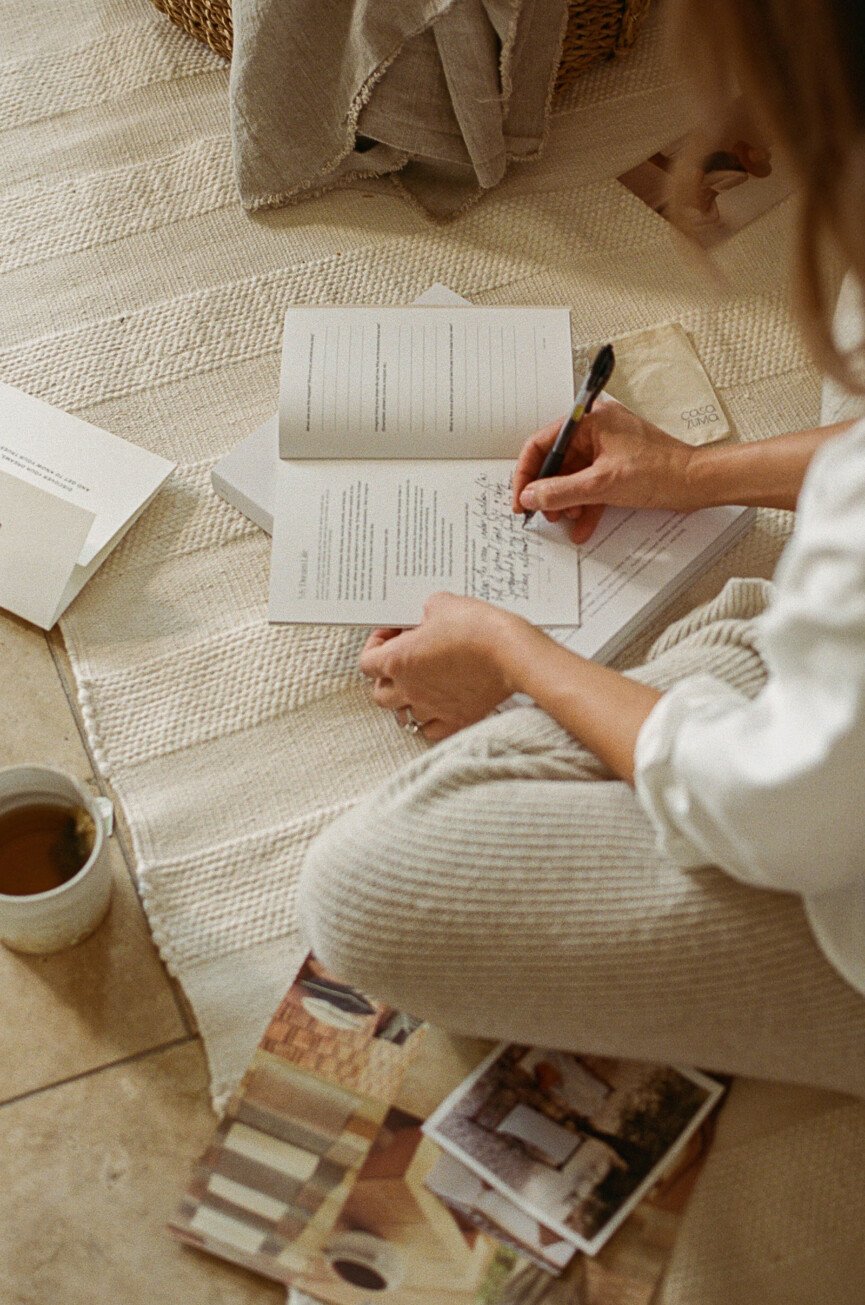
Vision Board Ideas for Every Area of Your Life
Sometimes, you’ll want one board that reflects your life as a whole. Other times, it feels right to create boards for specific areas. Here are some vision board ideas to get you started:
Learning
I love the reminder that being a student is a mindset, not a status. Your learning-focused board might include images of libraries, stacks of books, or people immersed in a new skill.
Reflection questions:
- What would it look like to be an “expert” in something I love?
- What skills or hobbies have I always wanted to try?
- Is there a course or certification I’ve been curious about?
Career + Business
When I created a career-focused board, I included photos of light-filled workspaces, women leading teams, and projects I wanted to tackle. If there’s a company or brand you dream of working with, put their logo right on your board.
Reflection questions:
- Does my current role align with my values?
- What would it feel like to experience flow at work every day?
- What’s one small step I can take toward the career I imagine?
Relationships + Love
This can be about romantic love, but also friendships and community. I’ve used photos of dinner parties, handwritten notes, and mothers with their children to represent the kind of relationships I want to cultivate.
Reflection questions:
- Who do I want around my table this year?
- What kind of friend, partner, or family member do I want to be?
- What rituals could I create to strengthen these bonds?
Wellness
For me, wellness boards have ranged from images of nourishing food and beautiful gym spaces to cozy baths and meditation corners. Think about what supports your whole self—body, mind, and spirit.
Reflection questions:
- Does my current fitness routine leave me feeling energized?
- What foods or rituals truly make me feel nourished?
- Where could I use more support for my mental health?
Travel + Adventure
One year, my board was filled with croissants in Paris, bookstores in London, and hikes along the California coast. It doesn’t have to be a faraway trip—even a weekend getaway can reset your perspective.
Reflection questions:
- Where do I feel most alive?
- Do I crave a solo adventure, a romantic trip, or family travel?
- How much can I realistically budget for travel this year?
Home + Lifestyle
I’ve learned that our homes are never “finished.” They evolve as we do. My home boards have included everything from big design projects to tiny rituals like family movie nights or fresh flowers on the table.
Reflection questions:
- How do I want my home to feel every day?
- What projects or small shifts would make the biggest difference?
- What daily rituals would bring more joy into my space?
Style
When I’ve felt stuck in a wardrobe rut, I’ve made a style vision board. It helped me define a few words I wanted my clothes to express (comfortable, chic, playful) and kept me from making impulse buys.
Reflection questions:
- What do I want my style to say about me?
- Are there clothes I’m holding onto that no longer serve me?
- If I had to build a 10-piece capsule wardrobe, what would I choose?
Money + Abundance
Money is such a powerful category for visioning, not just for the numbers, but for the freedom and experiences it allows. Your board could include images of debt-free living, generosity, or the lifestyle you’re working toward.
Reflection questions:
- How can I reframe money as a supportive tool, not a source of stress?
- What would my life look like if I were debt-free?
- What purchases or investments would make a meaningful impact?
A vision board isn’t about perfection—it’s about possibility
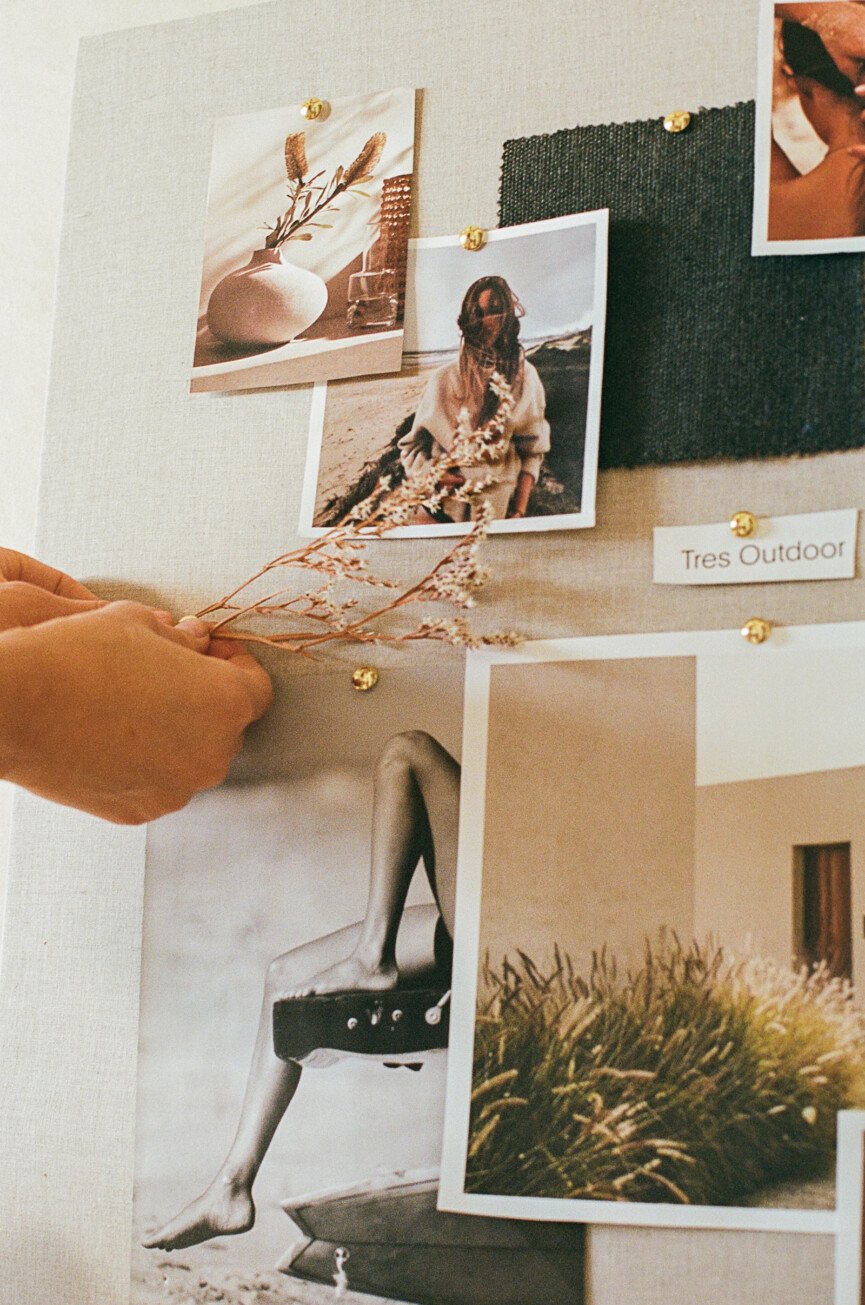
Tips for Making Your Vision Board Work
See it daily. Repetition builds belief.
One of the reasons vision boards work is because they keep your goals visible. When you encounter your board as part of your morning routine at your desk or every night before bed, it’s like giving your subconscious a gentle nudge: This is what I’m moving toward. If you’ve got a digital vision board, try setting it as your desktop wallpaper—seeing it multiple times a day is more powerful than you realize.
Pair it with rituals. Journaling, affirmations, or meditation amplify its power.
A vision board isn’t just about pictures on paper—it’s about the energy you bring to them. I love pairing mine with a daily ritual: glancing at it while I sip coffee, jotting down a few affirmations in my journal, or taking a moment of quiet to imagine myself living the scenes on my board. When you combine visualization with consistent practices, you anchor those dreams more deeply into your daily life.
Update as you grow. Your vision board is a living document of your journey.
It’s easy to think a vision board should be “finished,” but the truth is, we’re always evolving. Some goals may manifest faster than you expected (the best feeling!), while others may no longer resonate. Give yourself permission to update, swap images, or even start fresh. Just like we declutter closets to make space for the new, our vision boards benefit from a refresh, too.
Avoid These Common Mistakes
Making your board too rigid—dreams evolve, and so should your board.
One trap I fell into early on was treating my vision board like a checklist. But a vision board isn’t about perfection—it’s about possibility. If you feel boxed in or pressured by the images you chose, you’re missing the point. Think of your board as an invitation, not an ultimatum.
Tucking it away in a closet where you’ll never see it.
Out of sight, out of mind. A vision board isn’t meant to collect dust. Whether it’s hanging on your wall, propped on your desk, or saved as your phone background, make sure it lives where you’ll actually engage with it. Remember: the magic is in the daily reminder.
Choosing images that look pretty but don’t feel aligned.
Pinterest-perfect aesthetics are tempting, but they won’t move the needle if they don’t resonate. I’ve made this mistake before—picking glossy images that looked “right” but didn’t feel connected to me. The best boards are the ones that make you feel something when you look at them. If an image sparks energy, joy, or even a little nervous excitement—that’s the one to choose.
Go Deeper With My Vision Tools
The Casa Zuma Vision Board Kit
The exact kit I use for my own vision boards. It’s beautiful, intentional, and has everything you need in one place.
The Vision Series: 7 Days to Your Dream Life
Seven days of free prompts, reflections, and practices to help you uncover what you truly want.
Vision Board Workshops
I love leading both virtual and in-person workshops where we go through this practice together. It’s a chance to gain clarity, create your board, and connect with a community of like-minded women.

Final Thoughts: Your Future Is Waiting
Creating a vision board is about so much more than pretty pictures—it’s about taking ownership of your life and daring to imagine what’s possible. When you put your dreams where you can see them, they begin to feel less like “someday” and more like “inevitable.”
So here’s my challenge for you: take one small step today. Light a candle, jot down three words that capture how you want your year to feel, or print a single image that sparks joy and tape it to your wall. Momentum begins with the tiniest of actions.
And when you’re ready to go deeper, gather your tools—whether that’s a stack of magazines, my Casa Zuma Vision Board Kit, or joining me for a Vision Board Workshop—and give yourself the gift of creating a vision you can step into every single day.
Your future is already unfolding—take the first step today.
This post was last updated on October 5, 2025, to include new insights.


